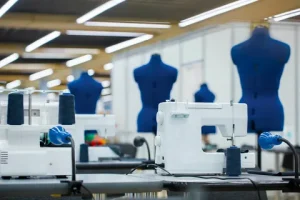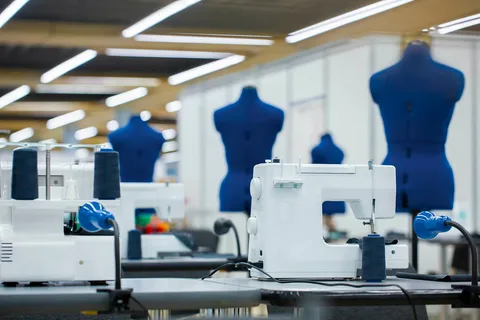The fashion industry has always been defined by its ability to adapt, innovate, and reinvent itself. From the days when garments were crafted entirely by hand to the present era of digital innovation, the tools and methods used by designers and manufacturers have evolved dramatically. Today, a key driver of this transformation is the integration of advanced technologies like computer-aided design (CAD) systems and precision cutting machines, alongside the growing need for professionals who are properly trained to use them.
For students, aspiring designers, and seasoned professionals alike, gaining the right blend of skills and access to modern tools has become essential. It is no longer enough to rely solely on traditional methods. The industry demands a balance between creativity and technical expertise, and this is where structured pattern cutting courses and the use of cutting-edge equipment such as CNC cutters come into play.
Why Traditional Skills Still Matter in a Digital Age
Despite the rapid rise of technology, fashion remains deeply rooted in craftsmanship. Understanding the fundamentals of fabric behavior, garment construction, and pattern development is crucial. Many of the world’s most successful fashion houses emphasize traditional skills as the foundation of their design philosophy.
However, traditional methods alone often fall short when it comes to efficiency and scalability. For example, hand-drawn patterns and manual cutting can be time-consuming and prone to inconsistencies. In a highly competitive global market, businesses can’t afford inefficiencies if they want to keep up with demand and maintain profitability.
This is why structured training programs, such as Pattern cutting courses, are so vital. They not only teach the basics of garment construction but also integrate modern digital tools, preparing designers to bridge the gap between artistry and technology.
The Rise of Digital Pattern Making
Digital pattern making is revolutionizing how clothing is designed and produced. Using software tailored to fashion design, professionals can draft patterns with extreme precision, make quick adjustments, and visualize garments in 3D before a single piece of fabric is cut.
Courses that specialize in pattern cutting now often include digital modules, where students are trained to use specialized software. This ensures they’re ready to enter workplaces where computer-aided tools are standard. For fashion brands, this means faster prototyping, reduced material waste, and the ability to bring collections to market more efficiently.
By combining traditional know-how with digital tools, students are empowered to become versatile professionals capable of working in various environments—from small studios to large-scale manufacturing facilities.
CNC Cutters: Efficiency Meets Accuracy
While digital pattern making optimizes the design process, the actual cutting of fabric is where technology like CNC cutters shines. CNC (Computer Numerical Control) fabric cutters are machines that translate digital patterns into precise cuts, ensuring consistency across multiple layers of fabric.
In the past, cutting large volumes of fabric was labor-intensive and often led to inaccuracies. With CNC cutters, however, even the most intricate patterns can be cut flawlessly and at remarkable speeds. This has made them a cornerstone of modern garment production, particularly in industries where precision is critical, such as sportswear and haute couture.
For students and businesses alike, gaining familiarity with these machines is crucial. Training often goes hand-in-hand with access to these tools, which is why pairing education with technology is increasingly becoming the norm in fashion schools and industry workshops.
Sustainability and Reduced Waste
One of the fashion industry’s biggest challenges is sustainability. Fast fashion and mass production have led to enormous amounts of waste and environmental concerns. By integrating digital design and CNC cutting, companies can significantly reduce material wastage.
Digital pattern software allows designers to optimize layouts before cutting begins, ensuring that every inch of fabric is used efficiently. CNC cutters then execute the design with precision, minimizing offcuts. This level of accuracy not only reduces costs but also contributes to a more sustainable production cycle—a priority for today’s eco-conscious consumers.
The Importance of Upskilling in Fashion
As the industry continues to evolve, the demand for highly skilled professionals grows. Many designers and technicians who once relied solely on traditional skills are now returning to education to keep pace with technological advancements.
Enrolling in pattern cutting courses provides the opportunity to upskill, learn the latest techniques, and stay relevant in a competitive market. These courses often blend hands-on training with exposure to digital technologies, ensuring students leave with practical, industry-ready expertise.
For businesses, investing in employee training means a workforce that is more adaptable, efficient, and capable of leveraging technology to its full potential.
The Future of Fashion Manufacturing
Looking ahead, the convergence of education and technology will only deepen. From 3D body scanning for personalized fittings to AI-driven fabric recommendations, the possibilities are endless. Yet, at the heart of it all, the industry will continue to rely on professionals who understand both the creative and technical sides of design.
For aspiring designers, mastering pattern cutting while embracing digital tools and machines like CNC cutters offers a pathway to success. For established businesses, combining technology with skilled professionals provides the edge needed to thrive in a competitive global market.
Conclusion
The fashion industry is undergoing a remarkable transformation. Traditional craftsmanship remains a foundation, but the tools and methods shaping the future are deeply rooted in technology. Through structured pattern cutting courses, professionals gain the expertise to navigate both traditional and digital methods, while CNC cutters provide the precision and efficiency needed for modern manufacturing.
Together, education and technology are setting the stage for a fashion industry that is more efficient, sustainable, and innovative than ever before. For those ready to embrace this future, the opportunities are limitless.







